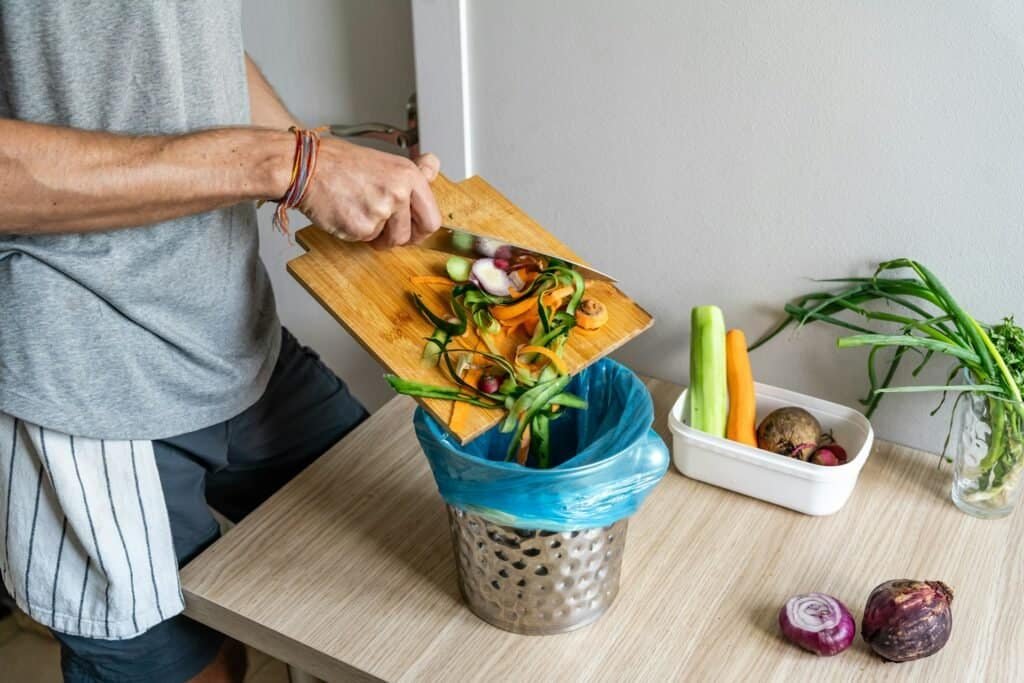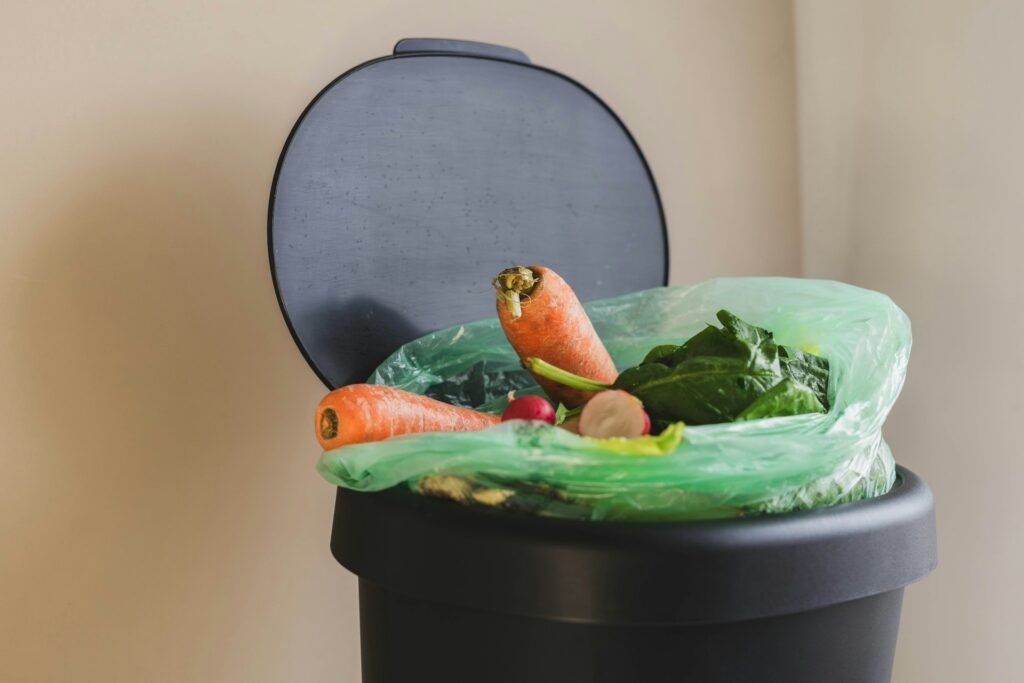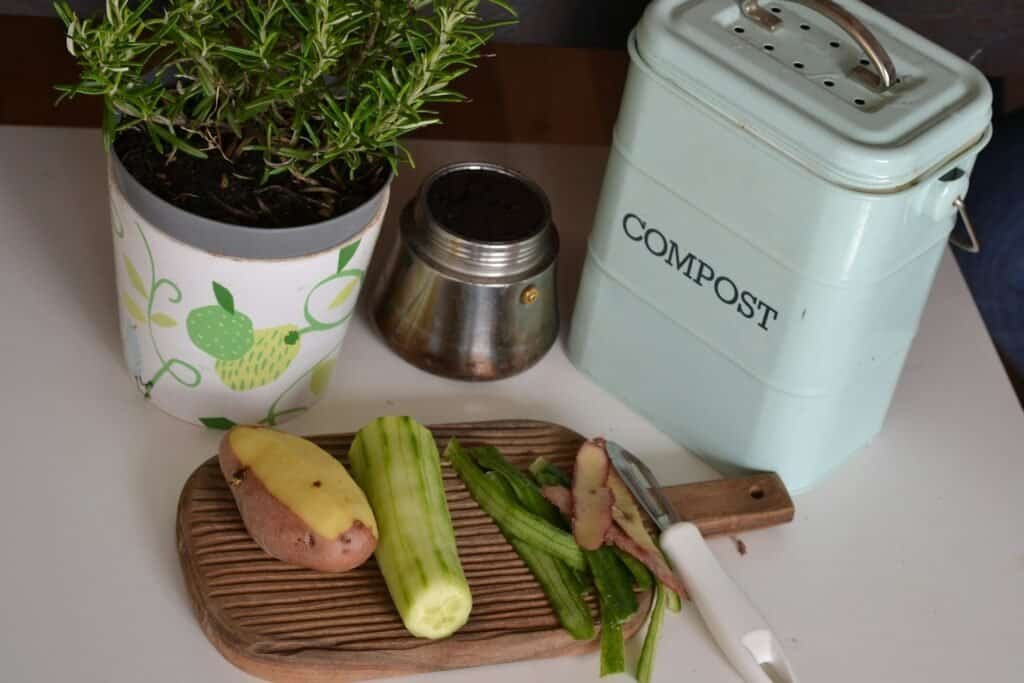Composting bread can be a sustainable way to recycle kitchen waste and return valuable nutrients to the soil. However, to ensure a successful composting process free from pests and mold, it’s essential to follow best practices and understand the nature of the materials you’re adding to your compost bin. For many, composting at home has become a standard practice. However, it might be hard to tell if bread is a good composting material or not. To the question of if bread is compostable, indeed, bread is compostable, but it requires certain conditions to break down effectively without causing problems in your compost pile.
The Compostability Factor of Bread
Bread is an organic material that decomposes, contributing carbon to your compost mix. However, its high starch content means it can attract unwanted pests if not managed correctly. To compost bread, it’s best to consider its place in the carbon to nitrogen ratio, ensuring it’s balanced with other compost materials.
While bread can break down over time, the process can be expedited by breaking bread into smaller pieces, which increases surface area and speeds up microbial activity. This step is critical in the composting sequence to avoid large, moldy clumps that can disrupt the pile’s balance.
Can Moldy Bread Find a Home in Your Compost?
Adding moldy bread to your compost is acceptable, as the mold cells already present can kick-start the decomposition process. However, it’s crucial to bury the bread under other compost materials to discourage pests from swarming to your compost bin. This step also helps contain the mold to the bread, preventing it from spreading to other parts of the compost.
It’s worth noting that stale bread and other materials like bread can speed up the composting process if mixed correctly. The green mold often seen on old bread is not harmful to compost; in fact, it’s a sign of active decomposition. Still, maintaining the balance of green and brown materials in your compost is necessary to ensure a healthy, odor-free pile.
Selecting the Right Types of Bread for Your Compost Bin
Not all bread is created equal when it comes to composting. Avoid bread with high contents of meat and dairy or sugary baked goods, which can disrupt the composting process. When adding bread into smaller pieces, always cover the bread with carbon-rich materials to optimize the compost heap.
Ingredients Matter: What to Check Before Composting Bread
Before tossing bread into the compost, inspect its ingredients. Bread containing preservatives may take longer to decompose and could potentially introduce unwanted chemicals into your compost. It’s safest to compost bread that is free from these additives.
For best results, bury the bread deep within the compost pile. This tactic not only speeds up the composting process but also helps deter animals and pests that may be attracted to the scent of bread.
Identifying the Best Breads for Your Composting Needs
When it comes to composting, fresh bread without preservatives is ideal. This type of bread can be composted more easily and without introducing potentially harmful substances into your compost. Plain breads, such as white or whole wheat, are generally safer bets for composting.
While most bread can be composted, it’s important to consider how quickly different types will break down. Denser breads may take longer, while lighter, airier loaves may decompose more swiftly.

Step-by-Step Guide to Composting Bread Effectively
Composting bread doesn’t have to be a challenge. By following a few simple steps, you can enhance your compost without attracting pests or creating imbalances. Begin with an introduction to the basics, then conclude with the key actions required for success.
- Break the bread into small pieces to increase surface area for microbes.
- Bury the bread deep within your compost to prevent attracting pests.
- Balance the bread with brown compost materials to maintain the carbon-nitrogen ratio.
- Monitor the compost pile for any signs of imbalance or excessive moisture.
How to Compost Bread Without Attracting Unwanted Pests
Minimizing the risk of pests is paramount when adding bread to your compost. Mix bread and other kitchen scraps with grass clippings or other green organic materials to mask the scent. Covering these layers with a blanket of brown materials like leaves can help keep pests at bay and speed up the composting process.
Maintaining the Perfect Moisture Balance in Your Compost
Bread’s moisture content can affect the overall moisture balance of your compost pile. To avoid sogginess, pair bread with carbon-rich materials that absorb excess moisture. Balancing the nitrogen content of bread with dry, carbon-rich materials ensures an optimal environment for decomposition.
Beyond Bread: Composting Other Bakery Products
When it comes to composting, bakery products similar to bread can also be included. The key is to understand the composition of these items and how they will interact with the existing compost ecosystem. By following the same principles that apply to bread, most bakery items can be successfully composted.
However, it’s important to remember that not all baked goods are created equal. Some may contain ingredients that are less desirable for composting, such as large amounts of sugar or fats, which can attract pests and disrupt the microbial balance.
The Do’s and Don’ts of Composting Baked Goods and Pasta
When adding baked goods and pasta to compost, it’s crucial to consider their starch content. Starchy foods like these should be added in moderation, as they can attract pests if not properly managed. Ensure these items are broken down into smaller pieces and mixed with other compost materials to encourage even decomposition.
Do compost plain bread, pasta without sauce, and plain baked goods. Don’t compost items with high sugar content, meat, or dairy, as these can spoil and cause odors. Always bury these items in the center of the compost pile to help contain any issues that may arise.
The Role of Bread in Different Composting Methods
Bread can play a valuable role in various composting methods, provided it is added correctly. Turning the pile regularly can help incorporate bread evenly and expedite decomposition.
Integrating Bread into Traditional Composting Systems
In traditional composting systems, bread is considered a green material due to its nitrogen content. To effectively integrate bread, it should be balanced with brown materials, such as leaves or straw, to maintain the compost’s overall health and efficiency. This balance is critical for achieving the desired results in traditional composting.
Ensure that the bread is well-distributed throughout the compost pile and not clumped together, which could slow down the composting process and create areas of imbalance within the system.
Vermicomposting With Bread: Rules and Recommendations
Vermicomposting, or worm composting, is a method where bread can be used as food for the worms. However, it’s important to introduce bread in small amounts to avoid overfeeding and potential problems with mold or odors. When adding bread to a vermicompost system, it should be done sparingly and always buried beneath the surface to avoid attracting fruit flies or other pests. This way, worms can process the bread at their pace, contributing to a healthy and productive composting environment.
Troubleshooting Common Issues With Bread Composting
Composting bread can be a rewarding practice, but it presents unique challenges. One common issue is the attraction of pests to compost piles, which can be mitigated by proper layering and maintenance. Another concern is the potential for bread to create an imbalance within the compost, leading to unpleasant odors and poor decomposition. By being attentive to the composition and conditions of your compost pile, these issues can often be prevented or resolved, ensuring a healthy composting process.
To deter pests, it’s essential to bury bread deep within the compost pile and to cover it with a thick layer of brown compost material, such as leaves or sawdust. Additionally, turning the pile regularly helps distribute the bread evenly and accelerates decomposition. If odors persist, assessing the moisture content and adjusting it accordingly can help create a more conducive environment for composting bread effectively.
When bread is not composting as expected, it may be due to an imbalance between green compost materials and brown compost materials. Ensuring an appropriate ratio, usually around 1 part green material to 3 parts brown, can address this issue. In cases where adding more bread to your compost seems to exacerbate problems, it might be necessary to temporarily halt the addition of bread and to focus on balancing the existing content with more dry, carbon-rich materials.
Avoiding the Pitfalls of Composting Bread
Successfully composting bread requires a keen eye on the balance of ingredients within your compost. Bread is rich in nitrogen, so it should be complemented with carbon-rich materials like dry leaves or wood chips. Additionally, to deter pests that are often attracted to bread, mixing in coffee grounds can be beneficial. Not only do coffee grounds help suppress strong food odors, but they also contribute to the nutrient profile of the resulting compost.
It’s also important to monitor the size of bread pieces added to compost bins. Large chunks may take longer to break down and can attract unwanted attention from animals and insects. By breaking bread into small pieces, you can hasten decomposition and minimize the risk of attracting pests. If problems persist, consider burying the bread deeper within the compost or using compost bins with secure lids.

Eco-Friendly Alternatives to Composting Bread
When composting bread isn’t an option or becomes problematic, there are eco-friendly alternatives to consider. Feeding leftover bread to animals, such as birds or farm livestock, is one possibility. Another approach is to repurpose leftover bread into new dishes, thereby reducing food waste. If these options are not feasible, finding a local food bank or community program that accepts leftover bread for distribution can be a beneficial way to ensure that no food goes to waste.
For those who still wish to return bread to the earth, consider using compost materials as a base for creating a habitat for beneficial insects or as a top dressing for garden beds. This approach allows the bread to decompose naturally without the potential issues associated with compost bins, such as pest attraction or imbalance in the compost’s nutrient profile.
Zero Waste Kitchen Tips: Utilizing Every Crumb
In the quest for a zero-waste kitchen, bread offers several opportunities. For indoor composting, cold composting can be an effective method to deal with small amounts of bread, as it decomposes over time without generating heat. This can be particularly useful for households that generate minimal food waste. Alternatively, worm composting provides a dynamic way to break down bread along with other organic waste, as worms can efficiently consume and process these materials into rich compost for plants.
Each of these methods, from cold composting to worm composting, requires a different approach to managing bread waste. For instance, in worm composting, bread should be added sparingly and mixed with other food scraps to prevent souring the bin’s environment. By adopting these methods, households can minimize their environmental footprint while contributing to a greener lifestyle.
Understanding the intricacies of composting bread not only enriches the quality of compost produced but also empowers individuals to expand their sustainable living practices. By exploring various composting methods and materials, gardeners can develop a deeper connection with the natural lifecycle of organic matter and its role in nurturing the environment.
Conclusion
Composting bread can be a beneficial practice, but it requires attention to detail. Break bread into small pieces to expedite decomposition and integrate it with shredded paper, nitrogen-rich greens, and carbon-rich browns. This helps maintain the balance of moisture content and nourishes the soil. When adding bread to compost, place it in the center of the compost pile and ensure it’s broken into smaller pieces to avoid attracting rodents and insects.
For gardeners seeking to embrace a green lifestyle, these composting tips are invaluable. Utilizing compost tumblers can help aerate the pile and achieve the fastest decomposition. Stale or moldy bread, when processed correctly, can contribute to healthy soil and a thriving garden. Ultimately, it’s about finding the right balance and techniques to turn pieces of bread and other organic waste into a resource rather than a nuisance.


